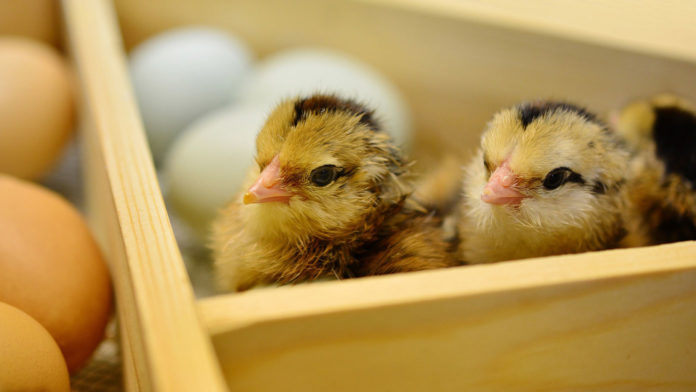Eggshells are pretty incredible structures. They’re strong enough to stay intact while a chick develops inside, and yet weak enough to break during hatching.
Until now, it’s been very difficult to probe the eggshell’s nanostructure because it is so fragile that it easily crumbles when scientists try to section it to examine under an electron microscope.
McGill University researchers Marc McKee and Richard Chromik, professors of dentistry and materials engineering respectively, were able to use new technology to successfully obtain eggshell slices.
“Thanks to a new focused-ion beam sectioning system recently obtained by McGill’s Facility for Electron Microscopy Research, we were able to accurately and thinly cut the sample and image the interior of the shell,” said McKee in a statement.
These images allowed the team to study the molecular nanostructure and mechanical properties of eggshells, giving an unprecedented view of not only what eggshells are made of, but also how those components are arranged. The work is published in Science Advances.
The eggshell is an essential structure for the embryonic chick. It forms a thin and protective chamber that contains everything the chick needs to grow. It directly supplies calcium for the growing chick’s developing skeleton, and keeps out bacterial infections.
Eggshells are made of both inorganic and organic matter, which includes calcium nanocrystals and lots of proteins. The study found that shell strength depends on the association of nanostructured minerals with a protein called osteopontin, present in both eggshells and bones.
The authors say that osteopontin works like a scaffold to help organize minerals like calcium. There are three main layers to the eggshell, and the amount of osteopontin in each is different: the outer layers have more osteopontin, giving rise to smaller and more closely arranged nanostructures that make the outer layers the hardest.
It also turns out that eggshells change over time as the chick grows and uses up some of the shell’s calcium. The reduced mineral ion content in the eggshell causes it to weaken, making it easier for the mature chick to break.
The researchers were also able to grow nanocrystals similar to the ones they found in eggshells in the lab. After mixing osteopontin with large calcite (calcium carbonate) crystals, calcium nanocrystals spontaneously formed. Understanding the role of proteins like osteopontin in the structures that provide eggshell strength are also important in food safety, as eggshell cracks mean higher likelihood of infection by bacteria like salmonella.
Beyond eggs, understanding eggshell nanostructures and how they form also provides inspiration for other composite materials that need to be lightweight, thin, and strong. The authors believe that it could find use in applications ranging from electronics to healthcare.
With these new insights in hand, it’s a great time for scientists to get cracking.








































